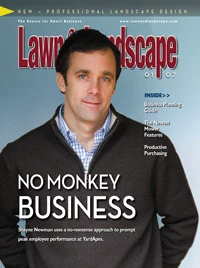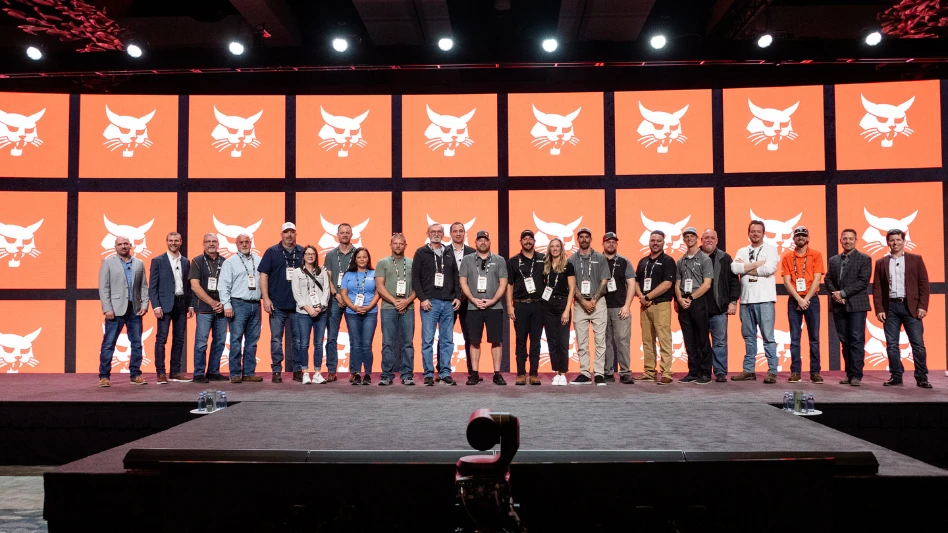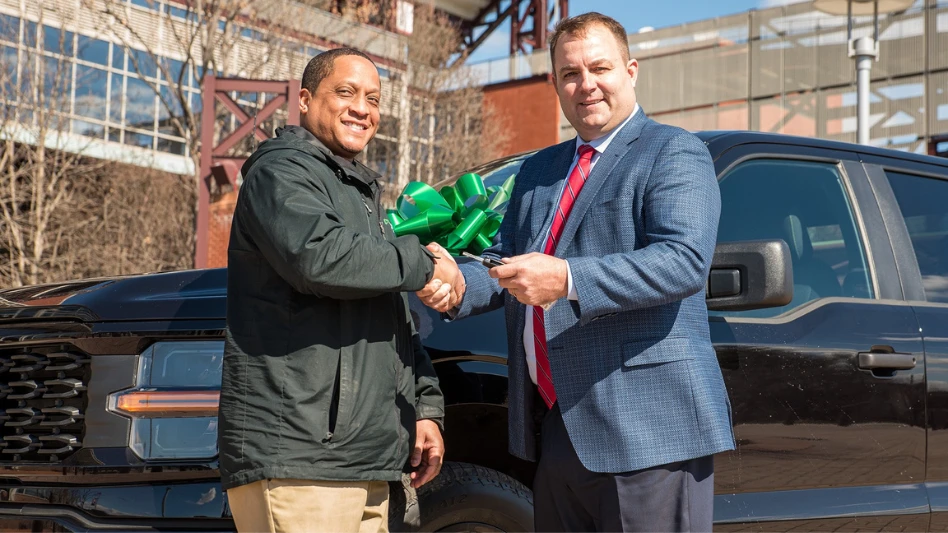Riding mowers, especially zero-turns, are beginning to sound like computer processors – they’re getting smaller, faster and more efficient. For 2007, this trend continues, with many contractors setting aside walk-behind mowers and embracing quick and nimble zero-turns. But while zero-turns are gaining in popularity, the walk-behind certainly hasn’t been given its Last Rites.
“Right now, zero-turn riding mowers are the standard,” says Greg Lewis, owner, Lewis Lawn Service, Sumter, S.C., who has owned his company for six years and been in the industry for 16. “Zero-turn riders give us a better opportunity to bag clippings when needed. We also have some very large areas to mow where operator fatigue would be an issue if we didn’t use riding mowers.”
|
|
Not only do landscapers like zero-turn riding mowers, property owners do as well. “The new mowers are more maneuverable,” says Hall White, vice president of sales and marketing for Frederick, Md.-based Wright Manufacturing. “They are lighter, placing less weight on residential yards. Homeowners prefer this.”
Companies such as Toro, of Bloomington, Minn., sell about five times as many commercial zero-turns as walk-behinds, says Randy Harris, senior marketing manager for Toro’s landscape contractor equipment division. “We sell more zero-turn riders because they are less fatiguing to the operator, and they’re considerably more productive than a walk-behind or tractor delivering much faster ground speed, larger deck sizes and, oftentimes, improved trimability.”
With contractors spending an average of about $10,000 for zero-turn riding mowers and $4,500 for walk-behinds in the last 12 months, according to Lawn & Landscape research, it’s important for these machines to last. And contractors are demanding that they stand up to the challenge.
“Durability is the price of admission,” Harris says. “Machines have to stand up to the daily rigors of commercial mowing and be reliable enough to perform for hours, day after day, in a variety of conditions.”
The best-cutting mowers won’t make contractors more productive if they need constant servicing. “Products that increase productivity and have a low cost to own and operate are key for landscape contractors,” says Bill Bower, director of marketing for Ferris Industries, Munnsville, N.Y. “It’s all about being able to cut more acres per hour. Of course, reliability continues to be a major part of the equation. You cannot make money when the mower is down.”
COMFORT & ERGONOMICS ARE KEY. Because comfort and ergonomics come into play after eight hours each day on a riding mower, features that enhance this are paramount. Manufacturers have improved mower suspension to increase comfort. “It can absorb the bumps and vibrations that cause operator fatigue, increasing operator comfort and productivity,” Bower says. “If it allows the operator to maintain cutting speed he doesn’t need to slow down to compensate for rough terrain.”
With improved suspension, the deck follows the movements of the wheels and flow of terrain, which increases the quality consistency of a cut, Bowers says, adding that reducing the shock load to the chassis extends mower life. All of this results in the operator cutting more acres per hour, Bowers says.
Beatrice, Neb.-based Exmark is also working closely with landscape contractors to reduce fatigue. “As the quality and performance of commercial mowers has improved over the years, our customers are asking more for features that make our equipment more comfortable to operate – especially over long days of operation,” says Luke Prussa, Exmark’s senior marketing manager.
“When contractors are as comfortable as possible, they can be as productive as possible – from sun up to sun down,” Harris says.
To make controls more accessible, some manufacturers have placed all levers – including the choke, throttle and ignition – on the left-hand side of zero-turn mowers. Clustering takes the guesswork out of finding the right control, thereby increasing efficiency. “When the operator is sitting in his seat, he wants to remember where everything is, not guess where it’s at,” Harris explains.
Some manufacturers have designed handlebar systems that sense the operator’s hands. “This anti-fatigue safety system requires no additional pressure to operate the mower because it works by detecting the hands of the operator, with or without gloves,” Bower says. “Operator-friendly controls are key to enhancing the maneuverability of today’s larger commercial walk-behinds. As units get bigger and heavier, smoother and easier-to-use control systems are required so they operate to their full potentials.
THE MOVE TOWARD DIESEL. Just as Americans have been slow to accept diesel engines in automobiles, diesels in mowers have met similar resistance. But they are gaining more acceptance because they offer greater fuel efficiency than gasoline engines. “Diesels also offer greater engine life than gas engines,” Harris says. “Typically, a diesel engine delivers four to fives times greater engine life than a gasoline engine. As a result, we are seeing more diesel mower models being introduced.”
| KICK THE TIRES...SERIOUSLY |
With a dizzying array of advancements and offerings in both walk-behind and riding mowers, it’s important more than ever to do research. Here are some things contractors should be mindful of when purchasing mowers. |
Diesels provide more torque for taxing mowing conditions, Harris adds. The torque curve of diesel engines is also flatter than gasoline-powered engines. “Even in the face of aggressive conditions – like hilly terrain, long or dense grass or when bagging – these diesel mowers are up to the challenge,” Harris says. “Compared to gasoline, diesel fuel burns slower and produces more power from a given amount of fuel.”
SIZES MAKES THE DIFFERENCE. With landscape contractors working in ever-increasingly tight spaces, it’s imperative to squeeze as much productivity out of sometimes small machines. Some manufacturers, for example, are releasing a series of sub-compact riding mowers offering a “gateway solution” that improves both property accessibility and mowing efficiency, Harris says. The machines are small enough to fit through standard 36- and 42-inch gates, yet large enough to deliver significant productivity gains over walk-behinds, he adds. “This can allow operators to ride instead of walk – reducing fatigue while attaining a superb after-cut appearance,” he explains.
Mower agility is something Lewis has been mindful of. “We have a military contract for 370 yards with very small gates,” he says. Among his crews’ equipment are two 60-inch riding mowers; two 52-inch riding mowers and a 34-inch riding mower. It’s the smallest of the three, which fits this “agility of a walk-behind, efficiency of a rider” model, that is useful for the military contract work, he says.
CUT AND MULCH. Over the past several years, improvements in equipment have resulted in mowers with ever-faster ground speeds. “But what has been communicated loud and clear by the professional in the field is that productivity still depends on the machine’s ability to deliver a great cut at those higher speeds,” Prussa says.
So, beyond speed, contractors are seeking additional clippings management options to please their picky clients. For Lewis, the most important new feature in his arsenal is the bagging and mulching system. “I’ve got many high-end customers who obviously demand that the yard be spotless when we leave,” he says, “and the better the bagging unit and its capacity to remove the leaves from the ground – whether they are wet or not – is my biggest concern right now.”
Lewis would like to see continued improvements with bagging and mulching systems. “We’ve had some problems with bagging systems and the amount of debris that is discharged that we have to chase around,” he says.
Manufacturers have turned their sights on mulching systems, some introducing decks that allow operators to switch from mulching to side-discharge without leaving the seat. “This feature is important to landscape contractors because some customers may want their lawns mulched, while some may want it to be bagged or side-discharged,” says Sean Sundberg of the commercial division of Cary, N.C.-based John Deere. “If the landscape contractor is mowing around parking lots, near sidewalks or around buildings, they can now easily switch to mulch mode to ensure they don’t damage property or injure pedestrians.”
But don’t think speed is completely out of the picture. Features such as adjustable baffles can increase the size of the discharge opening to achieve faster mowing speeds, Harris says. “In less demanding conditions, a closed baffle setting yields micro-sized particles and maximum discharge velocity,” he points out. These decks “achieve peak productivity regardless of the mowing conditions because they can be modified to suit the unique turf demands of any region.”
FOR THE FUTURE. Innovation will continue into alternative-fuel engines, such as propane, Bower says. “Trends will include riders with smaller deck sizes for tackling tight spaces,” he says. “Bigger engines on larger riders will also continue to be a trend.”
Harris expects improved emissions, driven by the Environmental Protection Agency. “Some trends we see are the increasing demand for increased fuel efficiency, be it diesel, propane or options that are better than car-rated engines,” he says.
Some manufacturers have also unveiled zero-turns with transmissions that direct power straight to the wheels. The design means there are no belts and there is less vibration from the engine. “This is a major development in zero-turn evolution,” says Ray Garvey, spokesman for Grasshopper, Moundridge, Kan. “For the end-user, you’re eliminating all issues related to belts and pulleys. You’re making a very efficient use of the drive system.”
Other manufacturers are aiming to bring new blood into the industry this year with lineups aimed at small- and mid-sized business owners who might not be able to afford a full-fledged commercial mower in the $10,000 range. These new commercial units are priced at closer to $5,000, points out Jack Drobny Jr., project manager for zero-turns, Cub Cadet Commercial, Cleveland, Ohio.
Looking to the future, Drobny says hybrid technology will take a larger share of the market. “Cities and states are putting strict rules in place,” he says, adding new engineering will be needed to meet more stringent requirements.

Explore the January 2007 Issue
Check out more from this issue and find your next story to read.
Latest from Lawn & Landscape
- North by Northwest's charitable act for the Ronald McDonald House Charities
- Coxreels expands V-100 Series product line
- Landscape Workshop expands with 2 acquisitions
- Wilson360 adds Daniel Grange as new consultant
- Batman and business
- CH Products releases new tree stabilizer
- Savannah Bananas founder Jesse Cole to speak at Equip Exposition
- Catch up on last year's Benchmarking report






